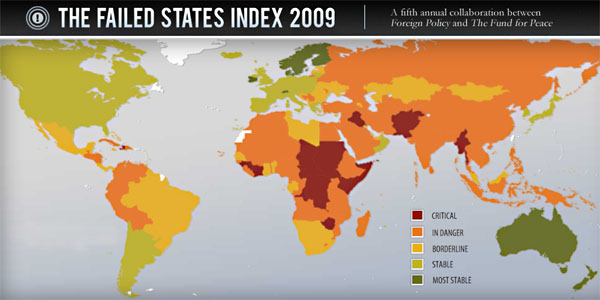This comes from Foreign Policy magazine, which ranks the world’s countries every year to figure out which ones are stable and which ones aren’t. According to FP, a grand total of 37 countries are minimally stable this year. The entire rest of the world is either borderline or in outright chaos:
The financial crisis was a near-death experience for insurgency-plagued Pakistan, which remains on IMF life support. Cameroon has been rocked by economic contagion, which sparked riots, violence, and instability. Other countries dependent on the import and export of commodities — from Nigeria to Equatorial Guinea to Bangladesh — had a similarly rough go of it last year, suffering what economist Homi Kharas calls a “whiplash effect” as prices spiked sharply and then plummeted. All indications are that 2009 will bring little to no reprieve.
Instead, the global recession is sparking fears that multiple states could slip all at once into the ranks of the failing. Now more than ever, failed-state triage could become a grim necessity for world leaders from the United Nations and World Bank to U.S. President Barack Obama’s White House. All of which puts a fine point on an old and uncomfortable dilemma: Whom do you help when so many need it?


















